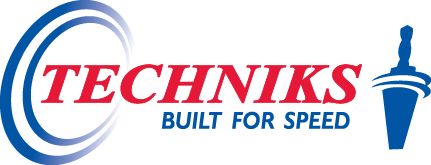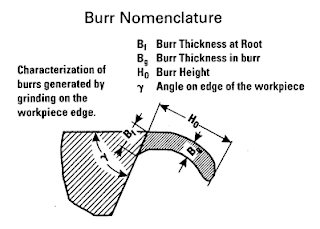The famous actress Judy Garland is said to have adlibbed about fellow child-star Micky Rooney: "It's the little things that matter". For central Indiana based Greenwood Machine, little burrs in a 1mm slot, mattered a lot.
Even the smallest burrs were not acceptable for this critical tolerance (0.0001” air motor. The company had an opportunity to diversify into the medical industry, manufacturing an air motor for a biopsy device that takes breast tissue samples for diagnostic analysis. Metal burrs left over from the manufacturing process were a part quality problem that had to be solved before they could move ahead with the project. These burrs could not be removed with conventional tumbling equipment, and that limited Greenwood Machine's ability to provide the quality and quantity of parts the customer needed.
While looking for alternative deburring technologies, they discovered the sPINner small parts deburring machine. They found that it's unique stainless steel pin media was able to quickly deburr the small slots.
With 25 years in the business, Greenwood Machine's owner Fred McWilliams has loads of experience producing small, complex parts. His business began machining small, precision parts (primarily RF connectors) for the electronics industry, and has grown to include a variety of quick-setup, short run jobs, and also some high-end bicycle components.
When the opportunity to manufacturer the air pump came up, Fred decided to move quickly and increase capacity by purchasing a bar-fed, Citizen/Cincom M32 CNC swiss-type turning machine to expedite production of the air pump.
This configuration allowed them to perform 3 operations at once, giving them a big advantage in cycle time. Their customer asked that they produce prototypes within 3 weeks of the CNC machine hitting their floor.
During the few weeks they had to set-up the machine and begin running prototypes, the deburring problem was discovered by Manufacturing Engineering Manager Joe Bowman. Joe's background includes experience with ISO 9001 certification and 8 years in CNC machining. He manages all the manufacturing processes even down to the CNC programs and setups. "This part is a cylindrical rotor that has 6, 1mm slots, each cross-drilled twice. The burrs in the 1mm slots could not be reached with our conventional tumbling deburring equipment, and our only other options were deburring by hand or sending the parts out for electrolytic deburring". said Joe. Both options were unacceptable due to the additional cost and time they added to the production cycle.
Joe had heard about the sPINner from Earth-Chain, and sent some sample parts to Mike Andrews for testing. A few days later the parts were returned, completely deburred, with a report documenting the media used and the run time (20 minutes).
Pleased with the results, Fred and Joe went ahead and purchased the sPINner and have been very satisfied with it. “This machine paid for itself in about a year. It reduced our cycle time, and gave us the ability to control quality in house.” said Joe.
The sPINner saved Greenwood Machine 17% on the cost to deburr each part compared to hand or electrolytic deburring, and even though they expect to nearly double production this year, they know deburring will not be a bottleneck.
According to Bowman “The sPINner is unlike other deburring technologies because the media is stainless steel pins, hardened to HRC 30 for long life. These special pins are why the sPINner can deburr small, complex parts so well.”
The parts and pins are placed in a deburring container and media solution is added. Next, the container is put into the machine and the cycle time and rotation speed is set. While it runs the pins are activated by a rotating magnetic plate underneath the deburring container. This causes the pins to rapidly reverse polarity, and jump up and down from 1 to 3 inches while rotating in the deburring container along with the parts. The parts and pins "spin" together to perform the deburring. The sPINner can even deburr internal cavities like slots and cross-drilled holes other media cannot reach.
Michael Harris, Vice President at Precision Finishing said: “The sPINner works best on small, precision parts made from non-ferrous metals including aluminum, brass, copper, stainless steel, and even titanium.” The aggressiveness of the deburring is controlled by programming the speed of the magnetic plate and selecting from a variety of media sizes. The machine is easily programmed and can run unattended.
For more information on the sPINner contact Michael Harris at (877) 354-3837, or visit them at: www.earthchain.com. Michael's email address is: mharris@earthchain.com




